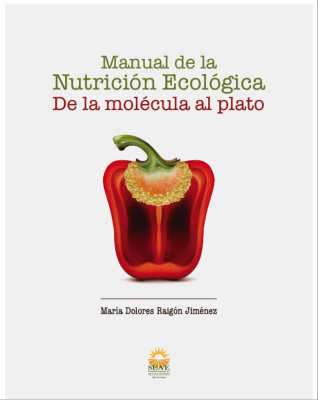Advantages and possibilities of organic farming
- Dossier
- Sep 21
- 7 mins

Agri-food systems underpinned by the principles of ecological farming continue to grow far and wide across the planet, and 186 countries already implement regulated organic farming techniques. Since organic farming has been equipped with control and certification systems, surface area data, the volume of production and the economic value of this production model are growing exponentially.
The prevailing agricultural model today is extremely problematic, not only on account of the damage caused by phytosanitary products, but also on account of the effects on climate change, the loss of biological diversity and the inability to ensure food sovereignty.[1] These issues are closely interrelated and must be addressed jointly in order to fully achieve the right to food. Political will is needed to reassess and address the vested interests, incentives, and power relations that sustain agrochemical-dependent industrial agriculture. Both agricultural policies and trading systems and the influence of companies on public policies must be challenged if industrial food systems dependent on pesticides are to be abandoned, and organic farming must be considered as an alternative to this production system.
Organic production is a comprehensive system of agricultural and livestock management, as well as food production on a whole, which combines differential techniques of good environmental practices, a high level of biodiversity (cultivated and environmental), natural resource preservation, the application of strict animal welfare and production standards in accordance with the preferences of certain consumers for products obtained from natural substances and processes. All this entails differentiating organic foods by way of their commercial, sensory, social and environmental attributes and nutritional composition.
[1] Steffen, W. et al. “Planetary boundaries: Guiding Human Development on a Changing Planet”. Science, 347. 2015.
There is a rise in consumer demand for organic food, even in economic and health crisis situations.
It should be noted that the increase in agri-food systems based on ecological farming principles is mainly due to the rise in consumer demand for organic food, which, even in economic and health crisis situations, makes the consumption of organic food a healthy food alternative to conventionally produced food.
Margin of manoeuvre
Although the area of agricultural land used for organic farming is increasing, it must be taken into account that only 1.5% of the planet’s agricultural area is managed organically, a figure that varies depending on the geographical area. In Europe, organic farming accounts for 8.1% of the total agricultural land. A positive indicator is that the margin of manoeuvre to apply ecological methods in the agri-food system is large, and that, on average, the annual increase in land that changes to organic management is 5%. Compared to the prevailing intensivist model of conventional agriculture, organic farming is a model increasingly acknowledged by consumers for its environmentally friendly nature, nutritional quality and fair values vis-à-vis human well-being.
Agroecology comprises the organic management of food systems, which includes scientific and academic approaches, social and political movements, and a series of eco-friendly practices in agricultural, livestock and food production management. The history of agroecology is linked to environmental movements and ecological research. Civil society, consumers and rural movements are the main drivers of alternative agroecological models to industrialised agriculture.
In its various dimensions, agroecology promotes the diversification of farms, the elimination of chemical inputs, the growth of biodiversity and the improvement of soil biological fertility. It also addresses the relationships and interactions between organisms and their environment and the management of agricultural ecosystems, including the entire food system, from primary production to food supply, distribution, processing, marketing and consumption chains. All of this contributes, directly or indirectly, to food and nutritional security and also to human health and well-being.
The promotion of organic farming will enhance food security, while contributing to territories’ local and sustainable development.
Organic farming practices provide criteria that allow organic food to be set apart under specific quality standards.[1] Its food production methods are more holistic and combine scientific advances that respect the environment and the balance set by nature itself. They allow the production of food with a high concentration of nutrients and organoleptic properties, a two-fold benefit of prime importance to health. On the one hand, they are foods that are not exposed to toxic substances, such as pesticides used in conventional agriculture, or to the accumulation of (potentially toxic) nitrates. And, on the other hand, the nutritional composition of organic foods is more balanced and provides nutrients in sufficient quantities according to the recommended amounts. The promotion of organic farming will enhance food security, while contributing to territories’ local and sustainable development.
To sum up, organic production is governed by the principle of sustainability, which entails producing food with a low environmental impact, and contributes to food and nutritional security and healthy lives for present and future generations. All this using techniques that respect the landscape and the maintenance of ecosystem services, such as fertile soils and clean water, while ensuring a fair income for producers and satisfactory costs for consumers.
Nutritional quality
The nutritional value of agri-food products is determined by their chemical make-up. This nutritional composition is variable and depends on different factors, including production techniques, which include the genetic potential of the plant or livestock product and the other factors that influence the production system: fertilisation, phytosanitary products, irrigation water, livestock feeding, animal welfare, prophylaxis, etc. Moreover, the different methods and products used after harvesting and in the production process can prove important and even decisive in the final composition and quality of the food product. Similarly, the presence of unwanted compounds, such as nitrates and nitrites or phytosanitary residues, medicines, hormones, additives and other substances, will rest exclusively on the production and processing systems.
[1] Röös, E. et al. “Risks and opportunities of increasing yields in organic farming. A review”. Agronomy for Sustainable Development. 2018.
 Illustration © Riki Blanco
Illustration © Riki BlancoIn recent years, fruits and vegetables have suffered considerable losses of vitamins and minerals; historical studies compiling nutrient content data for fruits and vegetables, including records spanning 50-70 years, show an average decrease of 5% to 40% or more in minerals, vitamins, and proteins in different food groups, especially those of plant origin.[1] These losses are mainly due to soil impoverishment, the use of commercial varieties, long-term storage with no natural ripening, transportation and the use of chemical treatments. To reverse the process of losing nutritional content, organic production techniques must be applied that reactivate the soil biological fertility, use traditional varieties, respect natural food cycles and ripening on the plant, in addition to committing to local produce.
Social demand
Organic food and farming meet society’s demand for protecting the environment and higher food quality, and place special emphasis on the need to avoid the use of synthetic chemicals or genetically modified organisms throughout the production chain. Organic food is the only one regulated under strict production conditions, complying with the general requirements of technical-sanitary regulations and with organic production regulations.
Therefore, a balanced diet that guarantees human well-being and the planet’s equilibrium must meet a series of global criteria, including combating the hunger of people in their territories, avoiding the generation of diseases in people from other territories and obtaining food with environmentally-friendly techniques that guarantee justice, security and food sovereignty.[2] These global criteria are translated into specific diets in each territory, adapted to resource availability from local and seasonal production, thereby optimising the raw materials available in each area and local production and cooking methods, which supports family farming and agro-ecological production, and that contributes to local consumption and the local economy.
[1] White, P. J. and Broadley, M. R. “Historical variation in the mineral composition of edible horticultural products”. The Journal of Horticultural Science and Biotechnology. 2005.
[2] Raigón Jiménez, M. D. et al. “Fruit quality of organic food: experimental evidence”. Bulletin of University of Agricultural Sciences and Veterinary Medicine. 2011.
Bibliographic references
Raigón Jiménez, M. D., et.al. “Fruit quality of organic food: experimental evidence”. Bulletin of University of Agricultural Sciences and Veterinary Medicine, 68: 267-272. 2011.
Röös, E., et.al. “Risks and opportunities of increasing yields in organic farming. A review.” Agronomy for Sustainable Development, 38(2): 14. 2018.
Steffen, W., et.al. “Planetary boundaries: Guiding human development on a changing planet”. Science, 347 Issue 6223, 1259855. 2015.
White, P. J. and Broadley, M. R. “Historical variation in the mineral composition of edible horticultural products”. The Journal of Horticultural Science and Biotechnology, 80(6): 660-667. 2005.
Recommended publications
 Manual de la nutrición ecológica. De la molécula al platoSEAE, 2020
Manual de la nutrición ecológica. De la molécula al platoSEAE, 2020
The newsletter
Subscribe to our newsletter to keep up to date with Barcelona Metròpolis' new developments




